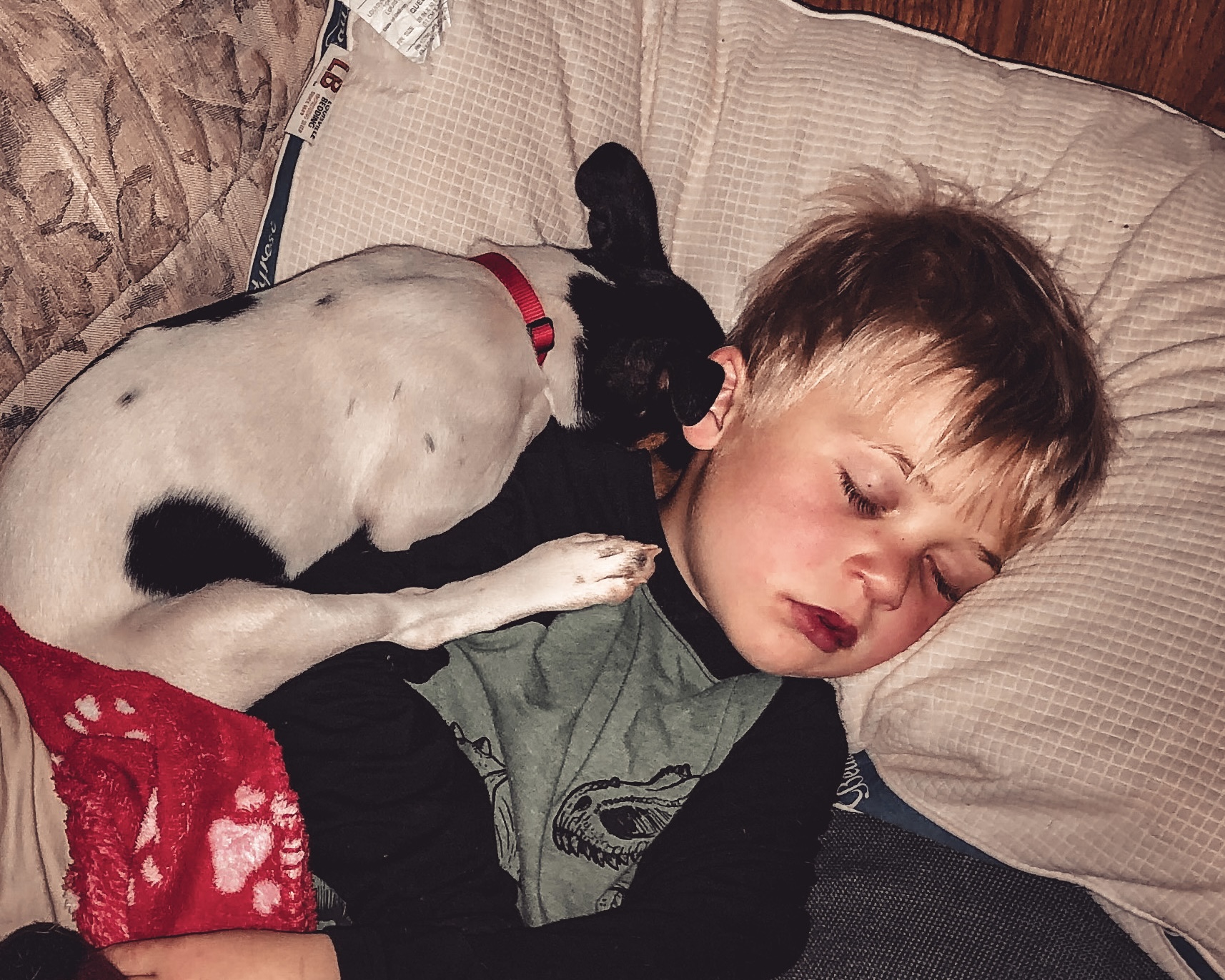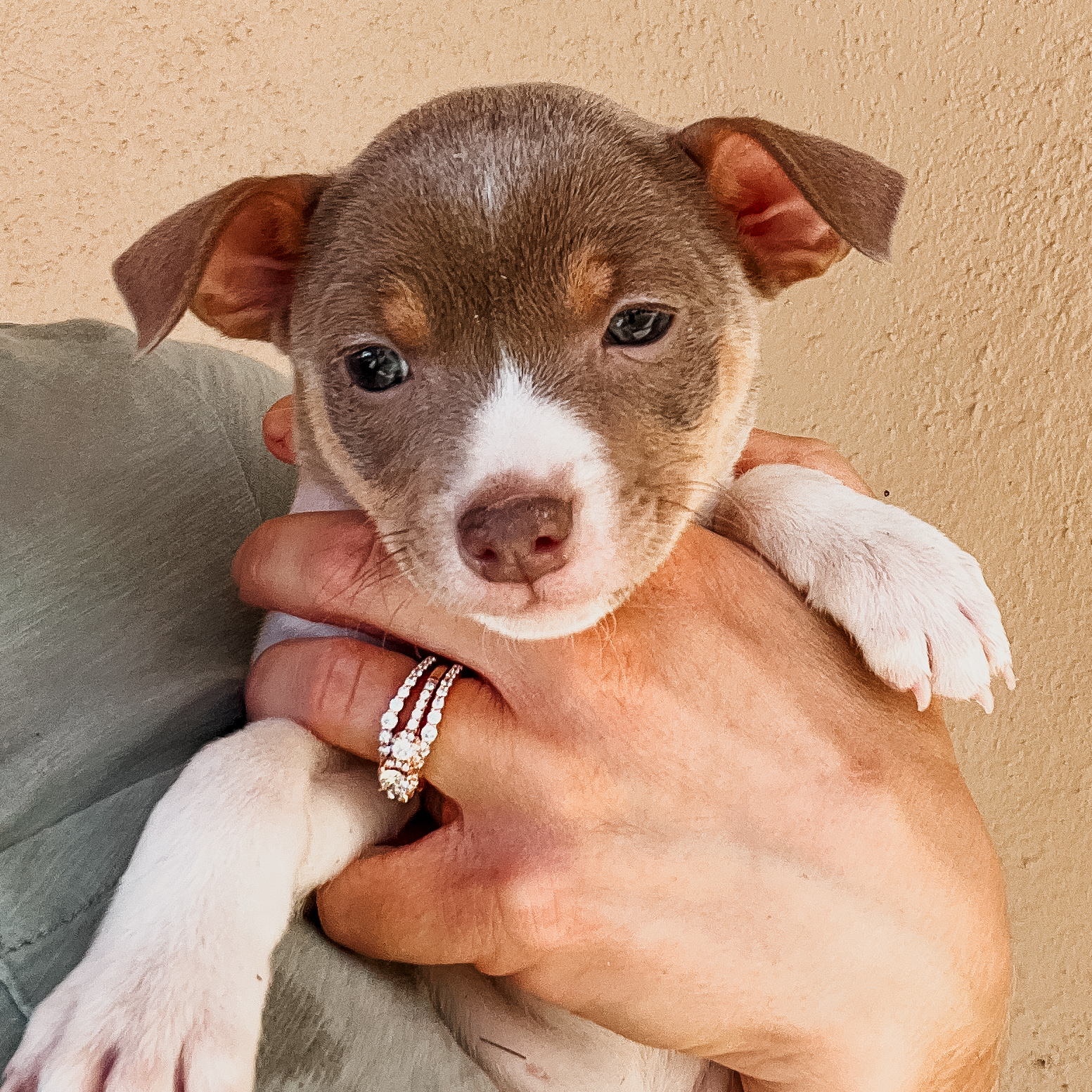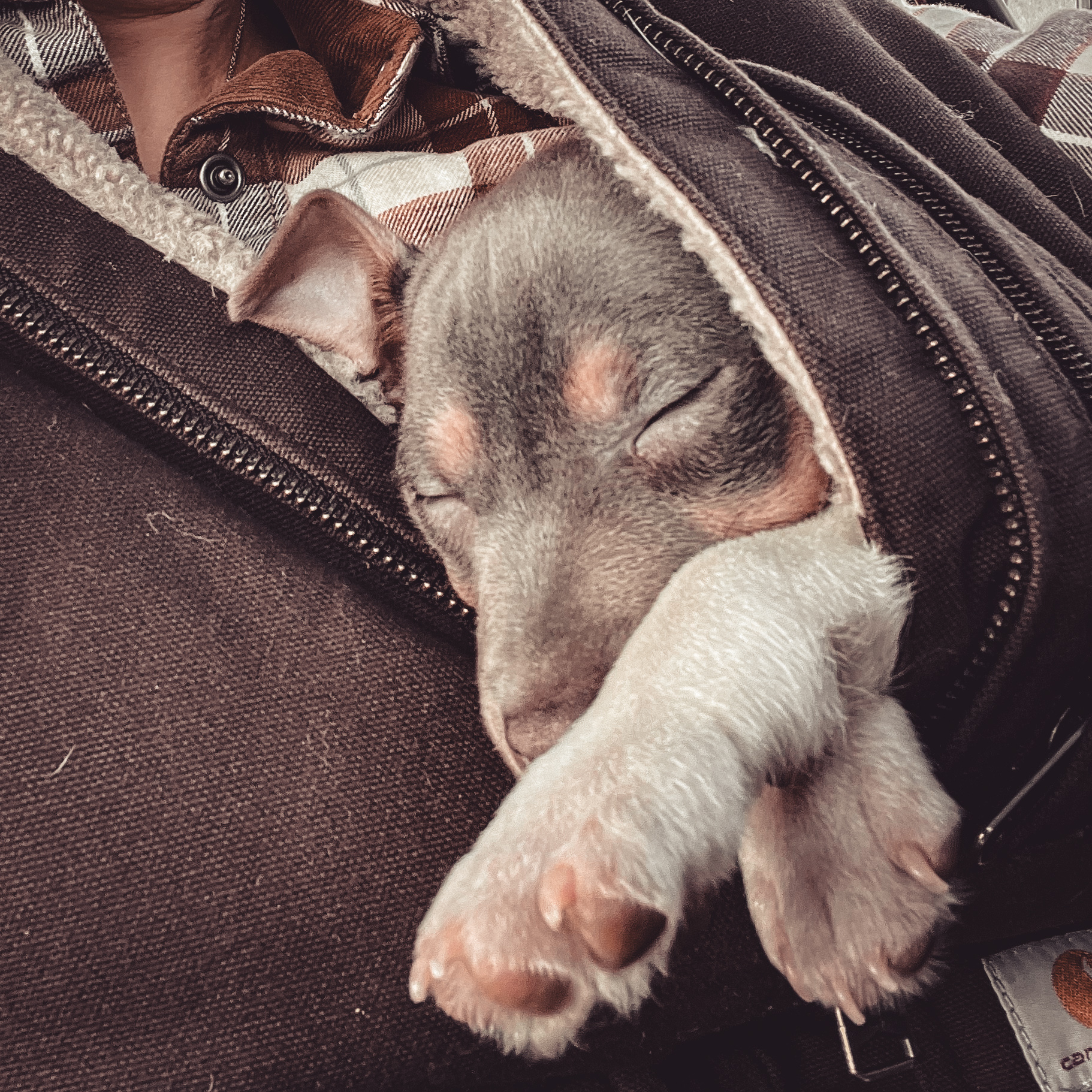Some people know exactly what they want—“only a female” or “definitely a male”—while others agonize over the decision. I’ve helped place a lot of puppies in homes, and I’ve learned that sometimes the right fit isn’t the gender people expected. So here’s what I’ve seen—what actually plays out in real life with my Rat Terriers—and how you can choose the best companion for your family.
Temperament: Who’s More Chill and Adaptable?
First off, it’s important to note that both males and females are very affectionate. They love to sit with you in whichever way you prefer. Many like to curl up in your lap, but if that’s not your thing, they’ll be just as happy lounging beside you on the couch—usually leaning into you a little, with a paw or head on your leg.
They prefer to be near you, but they’re not needy. Rat Terriers aren’t prone to separation anxiety. For example, my daughter’s dog is deeply bonded to her. No one else matters quite as much. But when my daughter goes to her dad’s for the weekend, her dog is fine—she just shifts to sitting with me, often giving me a look like I’m an inferior substitute. But she’s fine.
That said, males tend to be a little more confident by nature. They’re less reactive to changes and more likely to just go with the flow. For instance, when there’s a javelina (giant 80 lb. rodents we have in Arizona) in the backyard, the girls often run to the fence barking until it leaves. The boys? They usually just watch it, assess it as no big deal, and move on. They don’t feel the need to prove anything.
This calm confidence shows up on walks too—males are a little less reactive to new sights and sounds, which means they’re less likely to pull or get tangled up in the leash. And this applies even with intact males—neutering only enhances their chill demeanor.
If you have children, the boys often love the chaos, seeing it as entertaining. Joey and Kyle both adore kids and enjoy their company. The girls can be great with kids too, but they’re often more selective. Like my daughter’s dog, some females will have their favorite person and prefer a little more structure. Mochachino, for example, happily removes herself to my office when she’s had enough of the noise.
While both sexes benefit from early socialization, males tend to thrive in busy, high-stimulation environments—like classrooms, family events, and sports games. One of our boys is even a classroom therapy dog in Alaska! If you’re looking for emotional consistency, males tend to offer that more easily.
“If you want them to love you, you should get a girl. If you want them to be in love with you, then get a boy.”
Personality: Lapdog, Sass Queen, or Surfer Boy?
I find both males and females have wonderfully engaging personalities.
The girls often have their quirks and a little sass. Sometimes they give me this look—like I’ve missed something completely obvious—and it’s hilarious. They’ve got a bit of that condescending cleverness that some people love and others simply tolerate.
The boys? They remind me of surfer dudes—laid-back, affectionate, just so happy to be here. They’re more likely to bring you a toy, initiate play, or lean their head against your leg. They’re generous with affection and forgiving if you forget something. They’re mostly just thrilled to be with you.
Both males and females are self-sufficient but people-oriented. They’ll always prefer to be near you when available, but they’re not demanding about it. For example, our dogs will sit on the couch while I’m in the kitchen cooking. If I drop something, they’ll glance over to see if I need help cleaning it up, but they aren’t underfoot.
I’d say the girls have more of a contract with you—they want you to earn their approval. The boys? They’re just in love with you already.
Either way, they’ll bond deeply and become a loyal, loving shadow.
Our stud Kyle sleeping with my son in the RV when he was a puppy.
Size and Structure: How Big Are They Really?
Females tend to be slightly smaller—averaging around 15–16 lbs. Males are a bit larger, typically 18–20 lbs, mostly due to a little more muscle and about an inch of height.
I’m really proud of the structure in our lines—especially the shoulders. It’s something I’ve bred for deliberately because I love a balanced, athletic dog. That structure makes life easier—you don’t have to lift them onto the couch or into the car (though you can train them not to jump if you prefer).
Whether you’re going on a hike, loading up for a road trip, or just hanging at home, that solid build makes for a smooth, low-maintenance companion.
Is Marking a Thing with the Males?
Some people worry about marking behavior with males, but in our experience, it’s rarely a big issue. Even our intact studs don’t mark in the house. Joey sleeps on my son’s bed every night and gently taps on the door to go outside if he wakes before my son does.
Marking tends to show up more when males are around other male dogs and feel the need to “claim” things. Neutering helps reduce this, but it’s best not to do it too early—it can affect confidence in both sexes if done before maturity.
If marking ever is a concern, especially with older dogs or during transition periods, belly bands are an easy solution. They’re soft, washable, Velcro wraps that prevent any accidents and give you peace of mind. I use them for new or visiting studs until they settle in.
So—Which One Is Right for You?
No matter what you choose, the most important thing is finding the dog that matches your lifestyle. I love helping people figure that out. And while I’ve placed plenty of both males and females in amazing homes, I’ve found that families who were open to the right personality, even if it was a different sex, tend to end up pleasantly surprised—and absolutely in love.
If you’re unsure which pup is right for you, I’m happy to help. Sometimes the right one just clicks—and that connection is what matters most.




